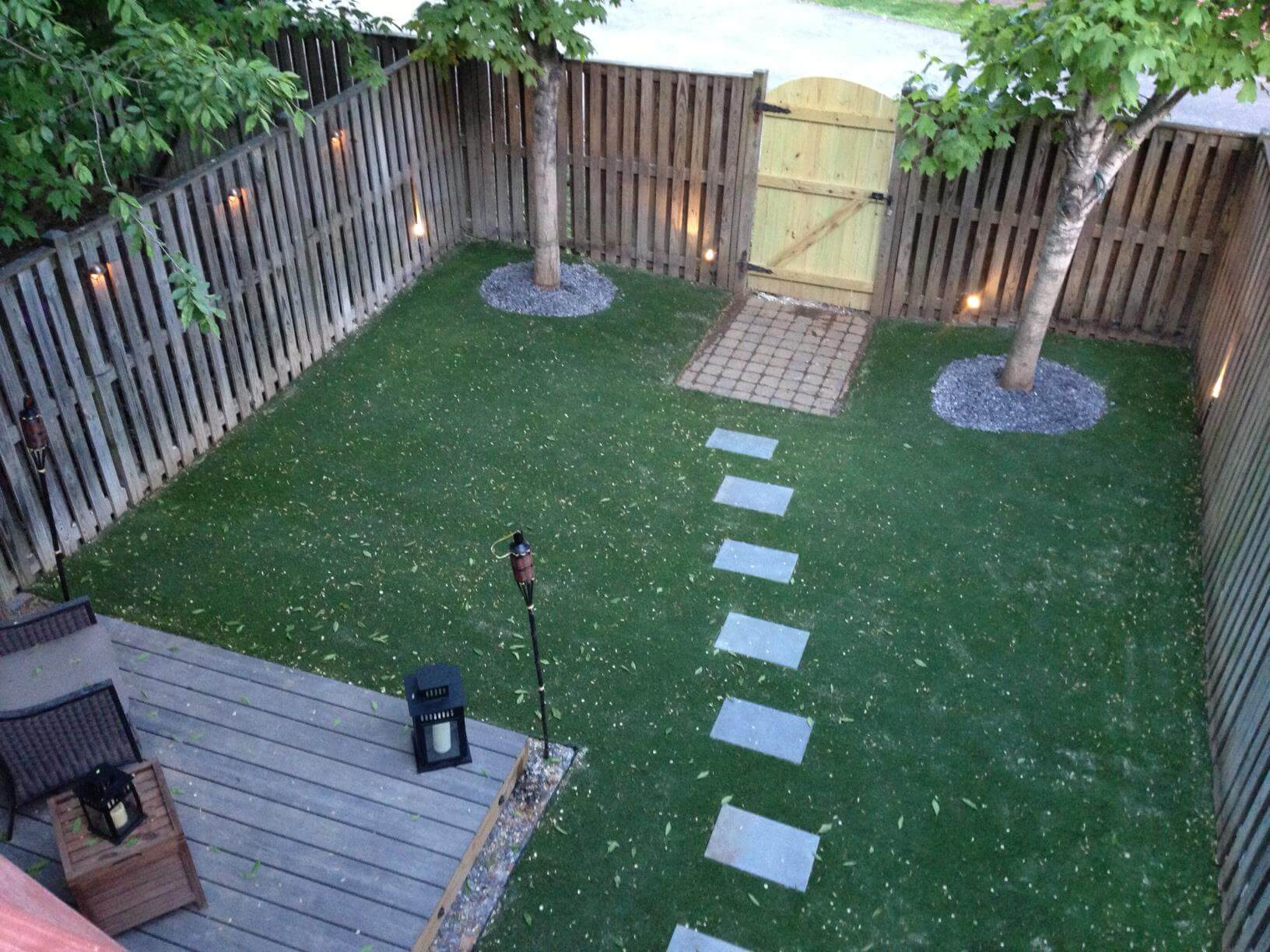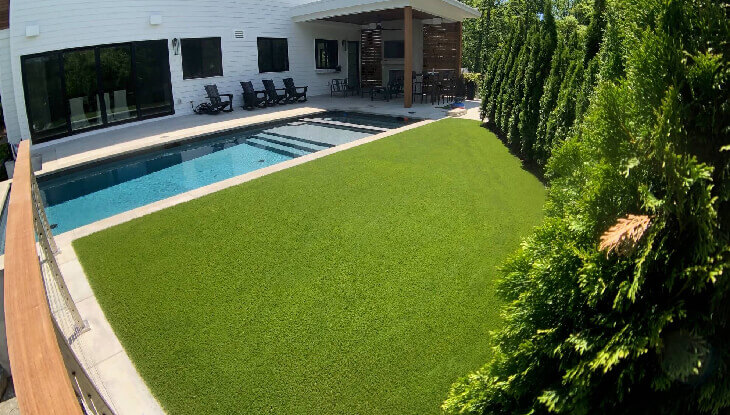Top Reasons to Take Into Consideration Artificial Yard for a Low-Maintenance and lush Yard
As homeowners significantly look for lasting options for exterior spaces, fabricated yard presents an appealing option to standard yards. The benefits expand past plain appearances and sustainability; exploring the multifaceted effects of man-made yard exposes a detailed approach to lawn monitoring that qualities much deeper consideration.
Year-Round Greenery
Among the most significant benefits of fabricated yard is its ability to supply year-round plant, regardless of climate conditions. Homeowners typically deal with obstacles in preserving a vivid lawn due to seasonal modifications, droughts, or heavy rains. Fabricated yard gets rid of these worries, ensuring a consistently lush appearance throughout the year.
This synthetic alternative is engineered to hold up against varied weather situations, from scorching summer season warm to freezing winter season temperatures. Unlike all-natural yard, which may brownish or come to be irregular during extreme conditions, man-made lawn preserves its vivid shade and structure, boosting the visual charm of any type of landscape.
In addition, artificial yard is resistant to bugs and illness that generally influence all-natural grass. This resilience adds to its long-lasting beauty, as there is no need for chemical therapies or fertilizers that can be unsafe to the environment. House owners can enjoy the visual advantages of a well-kept yard without the cyclical challenges posed by natural grass treatment.
Minimized Upkeep Efforts
Man-made yard significantly lowers maintenance initiatives, enabling homeowners to take pleasure in an excellent yard without the time-consuming tasks connected with natural lawn care. One of one of the most remarkable advantages of artificial lawn is the elimination of regular mowing. Without any requirement for a lawnmower, homeowners conserve both time and the cost of upkeep related to this equipment.

Cleansing artificial turf is straightforward; a simple rinse with a hose pipe or the occasional cleaning to remove particles is generally sufficient - artificial grass. This ease of care enables property owners to invest more time appreciating their exterior spaces instead of struggling over them. In summary, the lowered upkeep initiatives related to man-made yard make it an enticing option for those looking for a beautiful, problem-free lawn
Water Conservation Benefits
The considerable decrease in upkeep efforts linked with synthetic grass reaches water preservation, making it an environmentally pleasant alternative for homeowners. Standard grass need considerable quantities of water to continue to be vivid and rich, commonly leading to too much water usage, especially in arid regions. On the other hand, artificial grass removes the requirement for routine watering, substantially decreasing the overall water consumption in your backyard.
By selecting artificial turf, homeowners can preserve countless gallons of water yearly. This shift not just benefits private houses yet likewise adds to more comprehensive ecological efforts targeted at reducing water waste. In areas experiencing water deficiency, the adoption of synthetic grass can play a significant duty in alleviating the impacts of dry spell and ensuring that useful water sources are utilized more effectively.
Additionally, the installment of fabricated yard can help reduced local water need, benefiting the area as a whole. With expanding understanding of ecological concerns, choosing artificial yard offers as a proactive action towards lasting landscaping, aiding to preserve all-natural water resources while preserving a cosmetically pleasing outside area (backyard artificial grass). In summary, fabricated turf offers an engaging solution for water conservation, lining up environmental responsibility with modern landscaping demands

Parasite and Allergy Decrease
A significant benefit of setting up synthetic turf is its capacity to reduce pests and allergens in outdoor rooms. Traditional yard lawns frequently serve as reproducing premises for pests such as mosquitoes, ticks, and ants, which can create pain and health threats for family members and pets. In contrast, artificial lawn eliminates the natural product that attracts these pests, consequently substantially reducing their populations in your backyard.
Additionally, natural grass can harbor mold, plant pollen, and various other irritants, which can set off allergic reactions and respiratory system concerns for sensitive people. Artificial grass offers a cleaner setting, minimizing the potential for allergenic responses. Unlike all-natural yard, man-made grass does not create plant pollen, making it an excellent alternative for allergy sufferers seeking to appreciate their outdoor rooms without the threat of flare-ups.
Additionally, the absence of dirt in synthetic turf implies there is less dust and dust, further reducing air-borne irritants. This low-maintenance alternative not only improves the aesthetic allure of your yard however likewise advertises a healthier outside atmosphere, allowing households to appreciate their yards without the constant concern of parasites and irritants. Therefore, artificial turf is a calculated choice for those prioritizing comfort and health in their outside living spaces.
Long-Term Expense Cost Savings
Spending in artificial grass can lead to substantial long-lasting expense savings for house owners. Artificial lawn eliminates the demand for normal yard maintenance costs, such as mowing, fertilizing, and watering.
Additionally, the long life of artificial grass even more improves its cost-effectiveness. A lot of premium fabricated grass items can last 15 to 25 years with minimal upkeep, minimizing the need for substitute or comprehensive repair work. On the other hand, natural turf might require regular reseeding and normal treatment, which can rapidly build up in expenses.
Utility financial savings are an additional important aspect. House owners can a fantastic read expect to see reduced water expenses, as artificial lawn does not need irrigation. Additionally, the decrease in yard care services can liberate beneficial time and sources, allowing home owners to allocate their spending plans in other places.
Final Thought
In summary, fabricated grass provides numerous advantages for homeowners seeking a low-maintenance and lively landscape. Its capability to provide year-round plant, coupled with minimized upkeep efforts and considerable water preservation, makes it an enticing option. In addition, the reduction of irritants and insects adds to a healthier exterior setting. Eventually, the lasting cost savings associated with synthetic lawn strengthen its status as a sustainable and sensible remedy for enhancing exterior areas.
Man-made turf dramatically reduces maintenance initiatives, allowing house owners to take pleasure in a pristine yard without the lengthy tasks associated with all-natural yard treatment.The considerable decrease in maintenance efforts connected with synthetic lawn expands to water conservation, making it an eco pleasant choice for property owners. In contrast, artificial grass eliminates the demand for normal watering, significantly decreasing the general water usage in your lawn.
In areas experiencing water scarcity, the adoption of artificial lawn can play a substantial duty in minimizing the results of visit site drought and ensuring that useful water sources are made use of a lot more effectively.
With growing awareness of ecological issues, picking man-made yard offers as a proactive step towards lasting landscape design, aiding to protect all-natural water sources while preserving click an aesthetically pleasing exterior space.